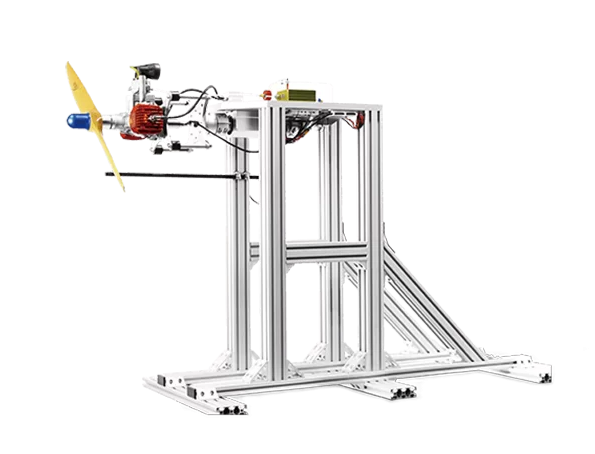Drones, also known as Unmanned Aerial Vehicles (UAVs), have become increasingly popular for various applications, ranging from recreational flying to professional photography and surveillance. One crucial aspect of drone design and performance is thrust, which is the force generated by the propulsion system to lift and propel the drone. Calculating thrust accurately is essential for optimizing drone performance and ensuring safe and stable flights.
Thrust is the force that propels a drone into the air and helps it maintain altitude. It is generated by the propulsion system, usually composed of electric motors and propellers. The relationship between thrust and other factors, such as weight, air density, and the angle of attack, is critical for achieving the desired performance.

The type and specifications of the drone's motors play a significant role in thrust calculation. Motor parameters, including Kv rating (rpm per volt), current draw, and motor efficiency, are essential factors to consider. These parameters help determine the motor's ability to convert electrical power into rotational force.
Choosing the right propeller is crucial for optimizing thrust. Propellers come in various sizes, pitches, and materials, affecting the drone's efficiency and performance. The pitch influences how much air the propeller moves with each revolution, while the size determines the overall efficiency of the propulsion system.
The drone's power source, typically a lithium-polymer (LiPo) battery, provides the necessary electrical energy to the motors. The voltage and current supplied by the battery impact the overall power output, affecting thrust. Understanding the battery's capabilities is essential for calculating the drone's thrust accurately.
To calculate thrust, several formulas and considerations come into play. The fundamental equation for thrust (T) is given by:
T=K×V×I
Where:
- T is the thrust,
- K is a constant based on the motor and propeller specifications,
- V is the voltage supplied by the battery, and
- I is the current drawn by the motors.
This basic formula provides a starting point, but additional factors must be considered to refine the calculation for a specific drone setup.
To account for motor efficiency (η), the formula can be modified:
T=ηK×V×I
This modification ensures a more accurate representation of the actual thrust generated by the propulsion system, considering losses due to heat and other inefficiencies.
Calculating thrust for a drone involves practical considerations beyond theoretical formulas. Testing and experimentation play a crucial role in fine-tuning the propulsion system for optimal performance.
Static thrust testing involves measuring the thrust generated by the drone's motors and propellers while stationary. This real-world data provides valuable insights into the actual performance of the system. By varying parameters such as propeller size, pitch, and motor characteristics, drone enthusiasts and engineers can optimize thrust for specific applications.
In-flight dynamics introduce additional factors that impact thrust requirements. Acceleration, deceleration, and changes in altitude all affect the drone's thrust needs. Dynamic thrust calculations must consider these factors to ensure the drone remains stable and responsive during various flight conditions.
In summary, calculating thrust for a drone involves a combination of theoretical formulas, motor and propeller specifications, and practical testing. Understanding the relationship between these elements is crucial for optimizing drone performance and achieving the desired flight characteristics.
For drone enthusiasts and professionals seeking the best performance from their UAVs, investing time in thrust calculation and experimentation is essential. By considering motor efficiency, propeller selection, and other factors, drone operators can fine-tune their systems for specific applications.
If you have further questions about drone thrust calculation or are looking for reliable suppliers for drone components, feel free to [contact us]() for expert guidance and assistance. Our team is dedicated to providing the information and support you need to enhance your drone experience.
Supplier partnerships can also be explored to access high-quality motors, propellers, and other drone components. Collaborating with reputable suppliers ensures that you have access to the latest technology and reliable products for your drone projects.
Previous: None.
Next: None.
Copyright:@2020-2021
Comments Please sign in or sign up to post.
0
0 of 500 characters used